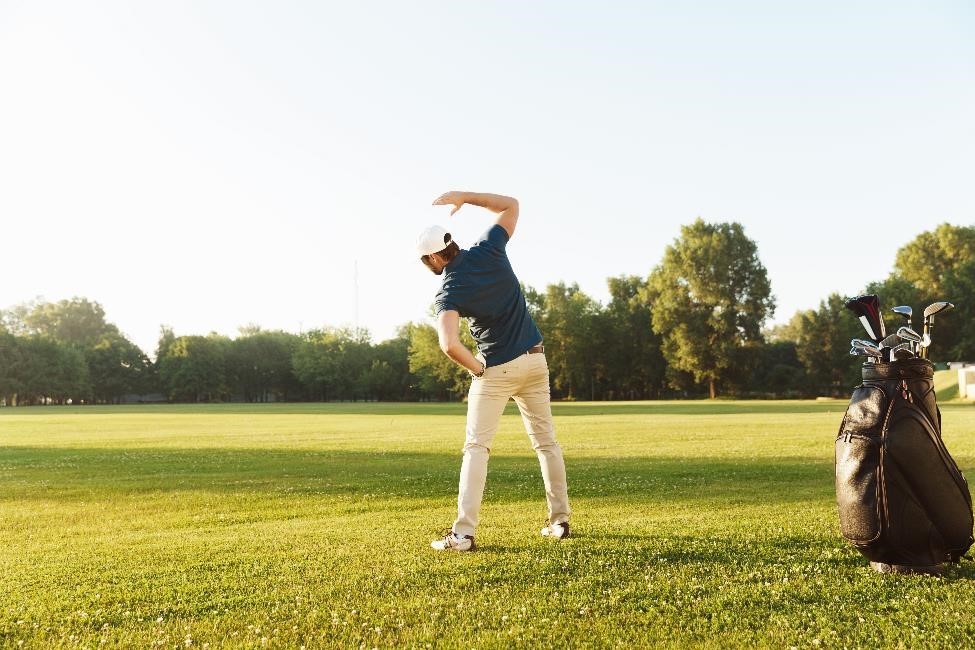
Spring time…it can only mean a couple of things: Taxes due or golf. Springtime golf in the South is a must for even the novice golfer. Natural beauty abounds…and the temperature is almost perfect. The golf courses are in phenomenal condition and there is nothing better to do than to work on your golf game and ready yourself for the summer months. We would like to share with you a couple of Spring golf tips that are vital to the success of your game throughout the year.
Stretching: Stretching is probably the most overlooked aspect of anyone’s golf game. It is important to keep your “golf” muscles conditioned throughout the off-season…but more importantly, you must begin to stretch daily (two to three times minimum) for the three weeks leading up to your annual first round of Golf. The focus should be on your hamstring muscles. Your hamstrings control many different aspects of your golf game including one of the basic four fundamentals: Posture. If you have proper posture it will enable you to swing the club back on proper plane and reduce the amount of stress on your lower back. The “hurdler” stretch is good to stretch your hamstrings…Sit on your bottom and place one leg directly out in front of you…take the other leg and curl it out to the side of your body. Once the position is accomplished, lean your body (without bowing your back) towards your toes on the extended leg. Hold for five seconds and repeat this effort ten times for each leg. Another good stretch is to stand up…place your feet together then bend from the waist and touch your toes. If you are like me, these can be very difficult and painful. The main thing is to stretch, do not bounce in order to see how far you can get.
Short game: It amazes me to see springtime roll around (the whole year for this matter) to see golfers spending 99% of their time on the practice tee instead of working on their short game. The short game consists of pitching, chipping and putting. This accounts for at least 50% (or more) of your shots during a round of golf…no matter how good you are. Putting should be the first emphasis when starting your practice regimen. Practicing putting can be mundane…but it will pay dividends throughout the season. Distance control is the number one problem we (teachers of the game) see. Distance control contributes to approximately 90% of the three putts in a round of golf. Every golfer should routinely spend 65% of their practice time on the putting green. Concentrate on your distance and not direction when you are practicing your putting. When you practice chipping, try to utilize most of your golf clubs (SW through 5 iron).
When chipping the ball, the number one goal is to get the ball on the ground as quick as possible and let the ball roll to the hole. The easiest way to achieve this is to practice chipping the ball to a point on the green (no more than 4 feet on the green) and calculate how far each shot rolls with different clubs. MINIMUM AIR TIME, MAXIMUM GROUND TIME should be your motto for chipping the ball. Pitching the ball is the exact opposite of chipping the ball. The only time you should pitch the ball is when there is something impeding you from chipping the ball.
A couple of things that you must take into consideration when pitching the ball are: spin (cannot predict), wind and firmness of the greens. Pitching the ball is unpredictable and not widely used as the number one method of getting the ball close to the hole. Remember when pitching or chipping the ball, pitch/chip to a point on the green…do not concentrate your focus on the flagstick. Your distance will always be off when you keep the flagstick as a point of reference.
Good luck to you in improving your game.
